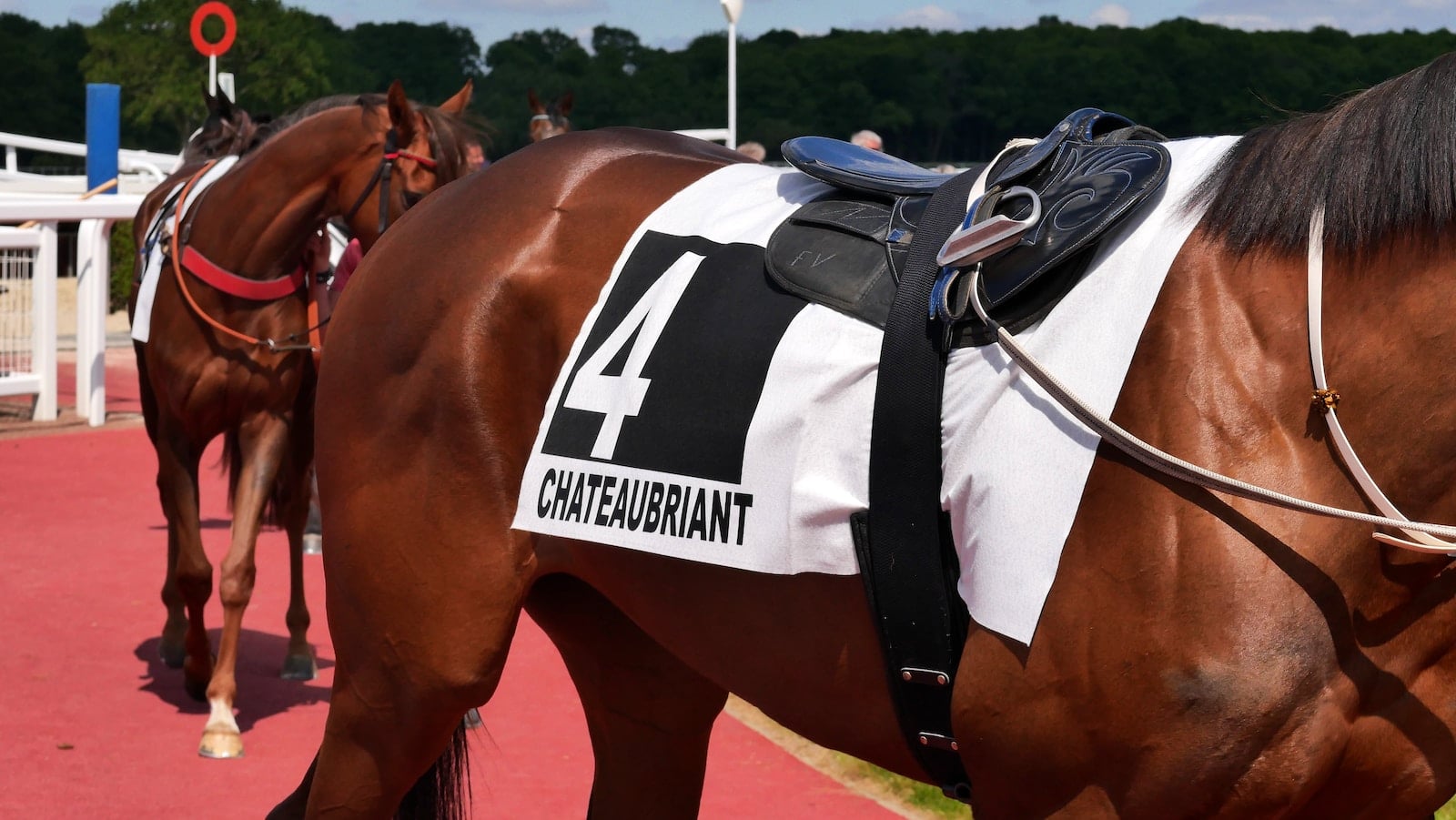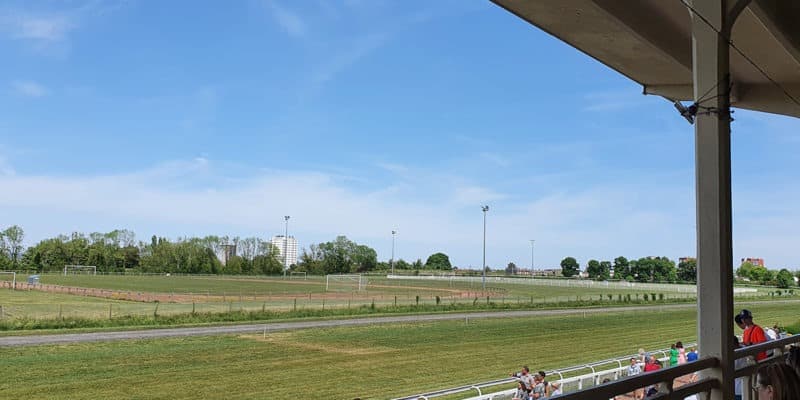The Hippodrome d’Arras (otherwise known as the Hippodrome des Hauts-Blancs-Monts) is a landmark in the city, with a rich and fascinating history. Since its creation, the racecourse has seen many events, many races and many spectators. In this article, we’ll explore the history of the Arras racecourse and evoke its passion for horses.
Activities at the Hauts-Blancs-Monts racecourse
Founded in 1884 and subsequently renovated, this racecourse has a 1050-meter grass track with a right-hand rope. Trotting and galloping competitions take place at five events scheduled in May (usually two dates), Whit Monday, mid-June and late August, when the racecourse festival is also held. Occasional events and concerts can also be organized throughout the year, often providing an opportunity for a family outing or a get-together with friends.
The great horse races
Horse racing is divided into two main disciplines: galloping and trotting. Gallop racing, the most widespread and fastest discipline, is a race in which horses reach their maximum speed. Gallop races are generally run over distances ranging from 1,000 to 3,200 meters, with variations depending on the age of the horses and their level of competition. Trotting, on the other hand, is a discipline in which horses must maintain a specific gait, the trot, throughout the race. Trotting races are often longer than gallop races, with distances of up to 4,000 meters. The horse races held at the Hippodrome d’Arras during the summer months (such as the Fête de la Musique) offer a unique spectacle, combining speed, elegance and competition. They are also a meeting place for horse lovers, punters and sports enthusiasts. Indeed, betting is an important aspect of horse racing, offering spectators the opportunity to bet on the horse of their choice and hope to win a sum of money in the event of victory. 
Focus on Trotting – Mounted and Attelé at Arras
The trot is a specific horse gait often found in Arras, characterized by the simultaneous pressing of the front and hind legs against the ground, following the left front/right hind and right front/left hind movements. The challenge is to maintain this gait at high speed without going into canter, on pain of disqualification. There are two main types of trotting race: harness and mounted :
- Trot harness : In this discipline, the horse pulls a sulky, a small, light two-wheeled carriage in which the driver (equivalent to the rider) sits ;
The aim is to trot as fast as possible to cross the finish line first ; - Mounted trot : Similar to harness racing, mounted trot also requires the horse to remain at a trot to avoid disqualification.However, in this variant, the jockey (rider) sits directly on the horse’s saddle.
Two types of start are used in trotting races: the start behind the autostart and the flying start (a French peculiarity). The autostart is a vehicle equipped with folding metal wings, behind which the horses are lined up in two rows according to their starting number. In a flying start, the drivers position themselves perpendicular to the track and, once in order, make a quarter turn to run off simultaneously onto the track.
Other major racecourses in the region
TheHauts-de-France region boasts several major racecourses, attracting visitors and competitors from all over the world. Here are some of the region’s best-known racecourses:
- Hippodrome de la Capelle : Located in La Capelle, this is one of the region’s most important racecourses.
It offers mainly trotting races and regularly hosts national and international competitions.
The racecourse’s sand track is renowned for its quality and technical features ; - Hippodrome de Chantilly: Although located in the Île-de-France region, the Chantilly racecourse is close to the Hauts-de-France region and is one of the most prestigious racecourses in France. It hosts top-level gallop races, including the Prix du Jockey Club and the Prix de Diane, which are among France’s most prestigious equestrian competitions ;
- Hippodrome de Compiègne : Located in the Oise region, the Compiègne racecourse is renowned for its gallop races, but also hosts trotting races. It offers events all year round, with a top-quality grass track ;
- Hippodrome de Le Croisé-Laroche : Located in Marcq-en-Barœul, near Lille, this racecourse is one of the most important in the region in terms of attendance and the quality of the races offered. It offers trotting and galloping races on a sand and grass track ;
- Hippodrome de Le Touquet: Located on the Opal Coast, this racecourse is particularly appreciated for its exceptional setting and friendly atmosphere. It offers gallop and trotting races on a grass track, as well as entertainment and events throughout the year.
How to get to the Arras racecourse ?
To get to the Hippodrome d’Arras, located at Avenue de l’Hippdrome, 62000 Arras, you have several options:
- By car : If you’re coming by car, you can use a GPS or navigation app to guide you to the Hippodrome d’Arras.
On-site parking is generally free for visitors, but it is advisable to check parking conditions before your visit ; - By train : Arras train station is about 3.7 km from the Hippodrome. From there, you can take a cab or VTC service directly to the Hippodrome. Alternatively, you can use public transport (bus or city car in the first instance) to get close to the Hippodrome ;
- By bus : The nearest bus stations to L’Hippodrome are :
- La Fontaine is a 2-minute walk away (91 metres) ;
- The hospital is a 4-minute walk away (208 metres) ;
- Braque is 316 metres away, a 5-minute walk ;
- Lanvin is 660 metres away, a 9-minute walk ;
- Lycée Le Caron is 753 metres or a 10-minute walk away ;
- Tour Courbet is 786 meters away, an 11-minute walk.
- By bike or on foot: If you’re already in Arras and want to get to the Hippodrome by bike or on foot, you can follow the Chemin des Courses, which leads directly to the Hippodrome. The distance from downtown Arras is around 3 to 3.5 km, which makes for a pleasant stroll.
Situation and location on plan
Here’s a map to help you find your way:
M.O.
